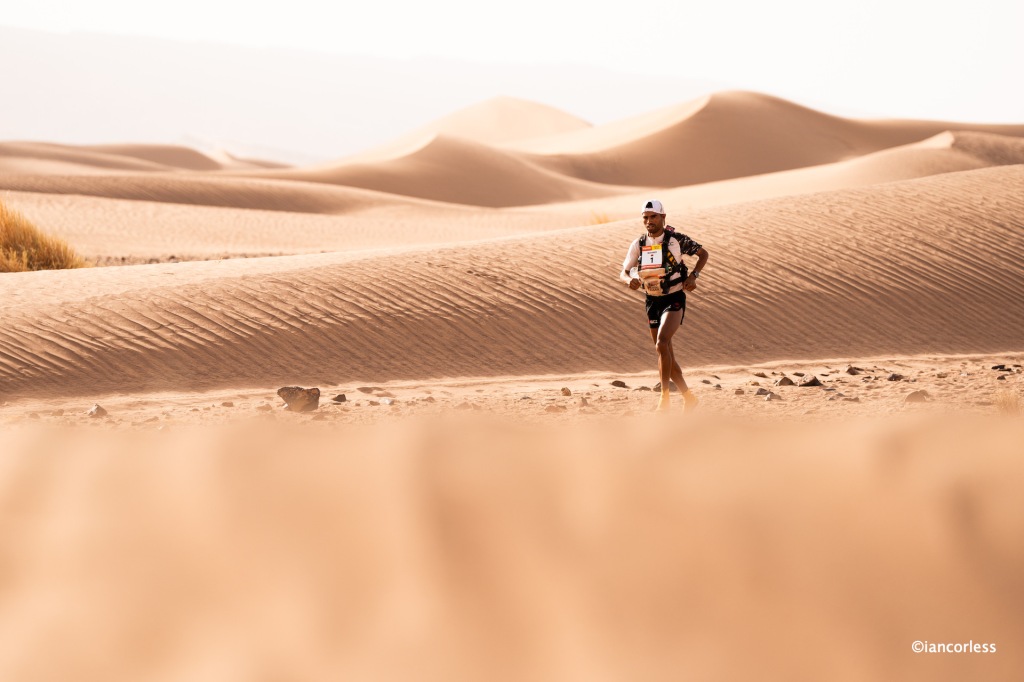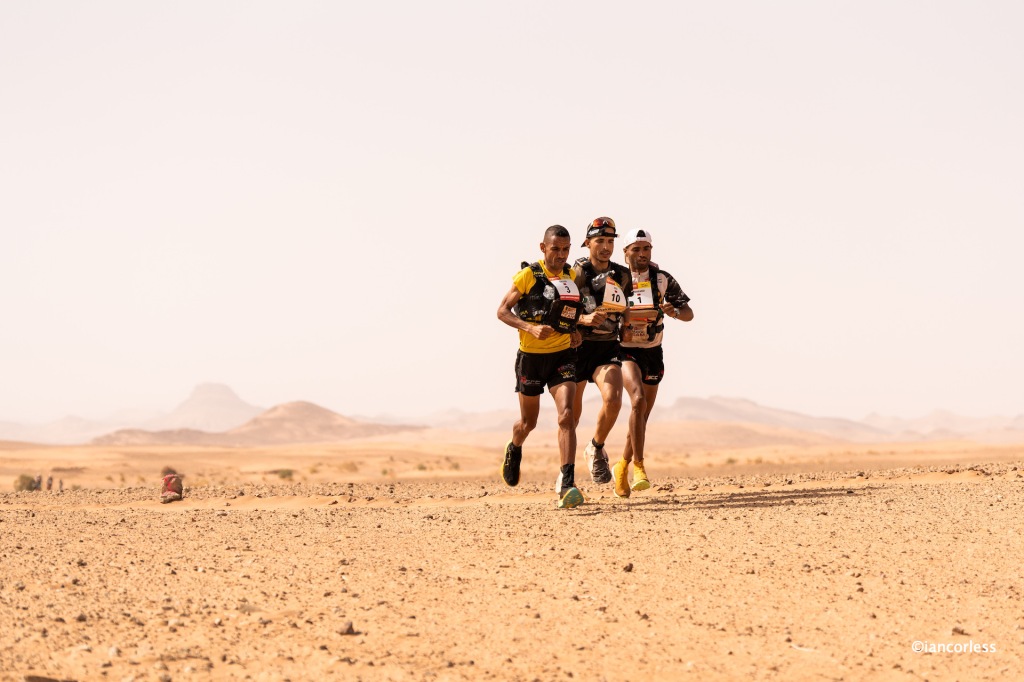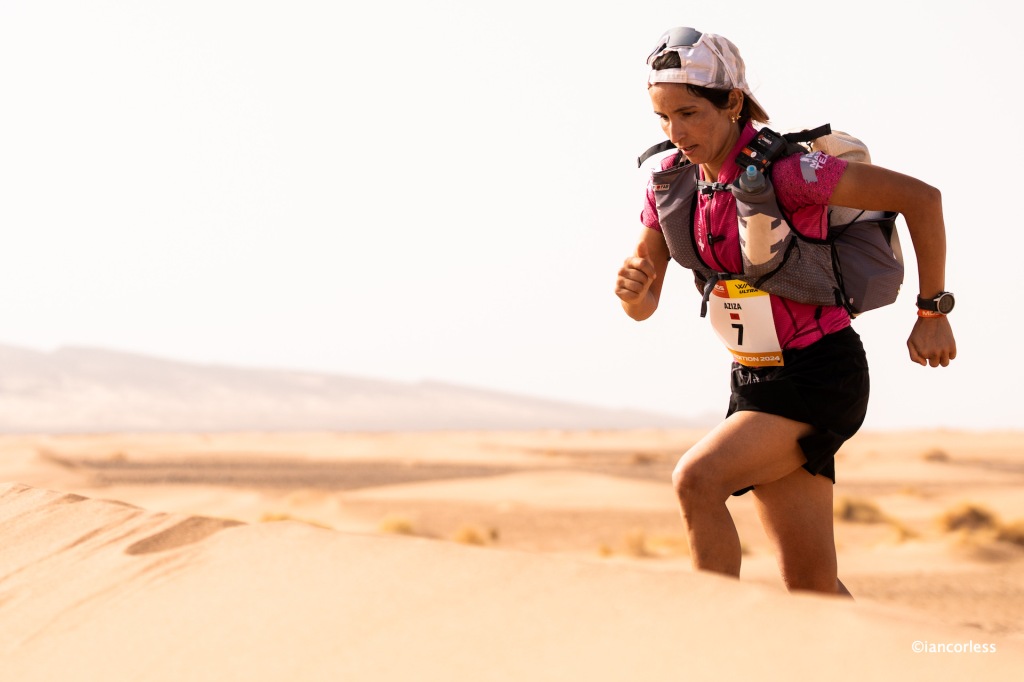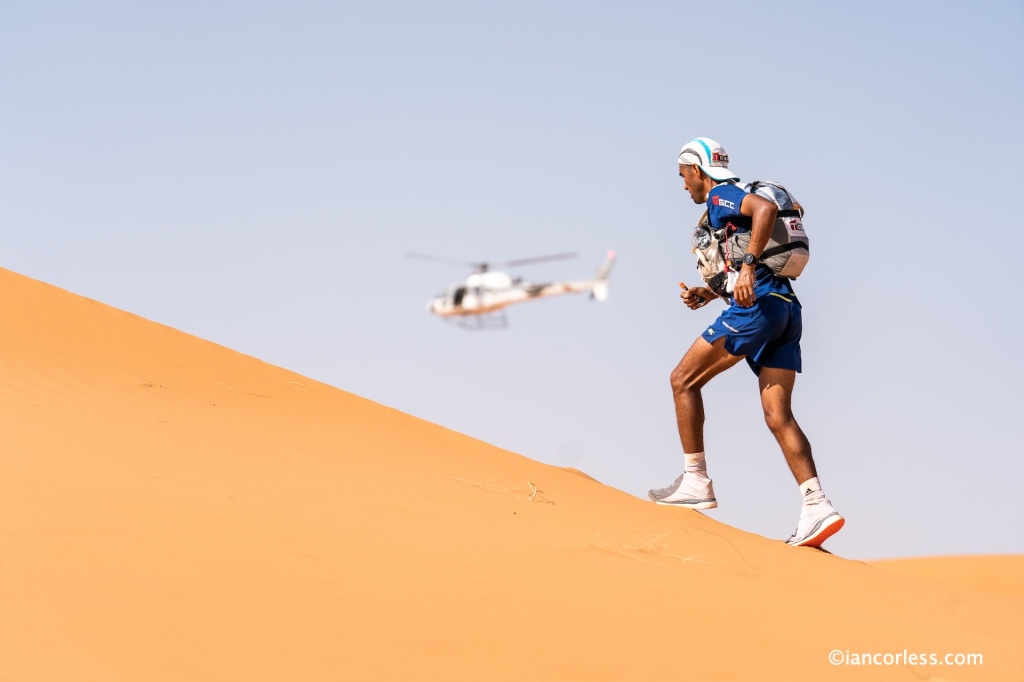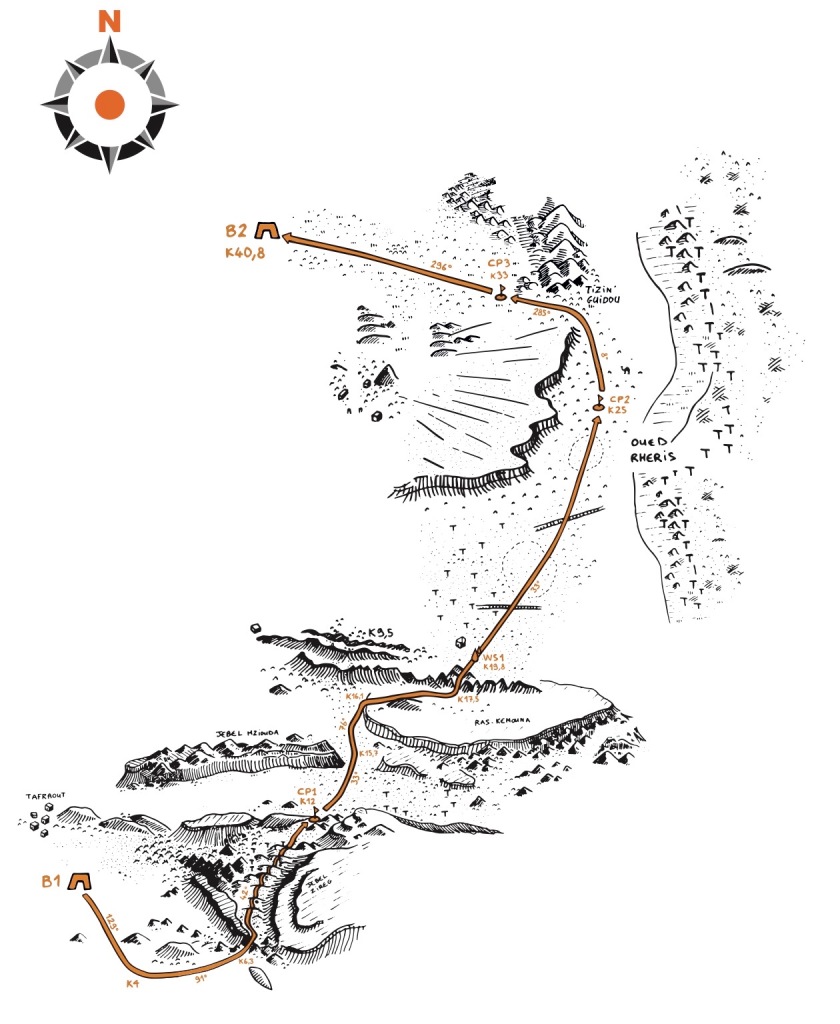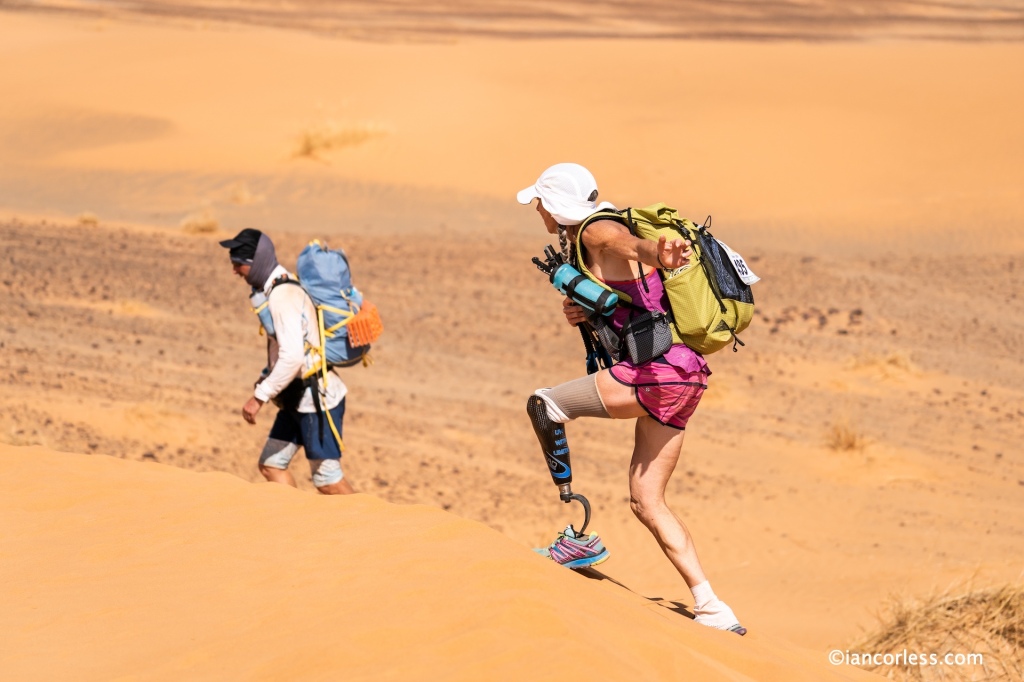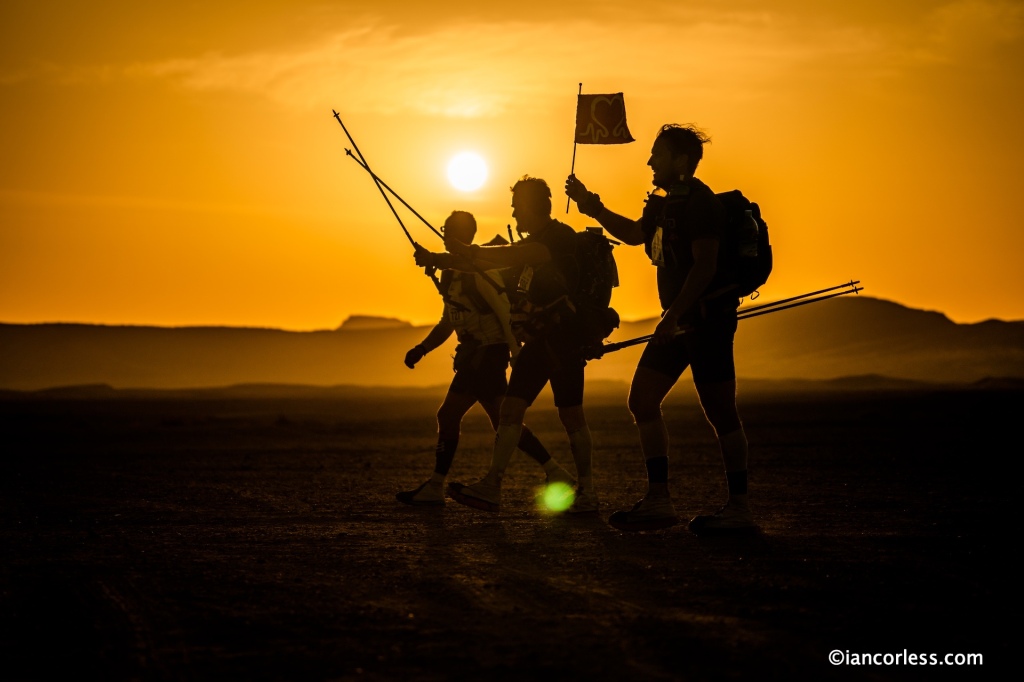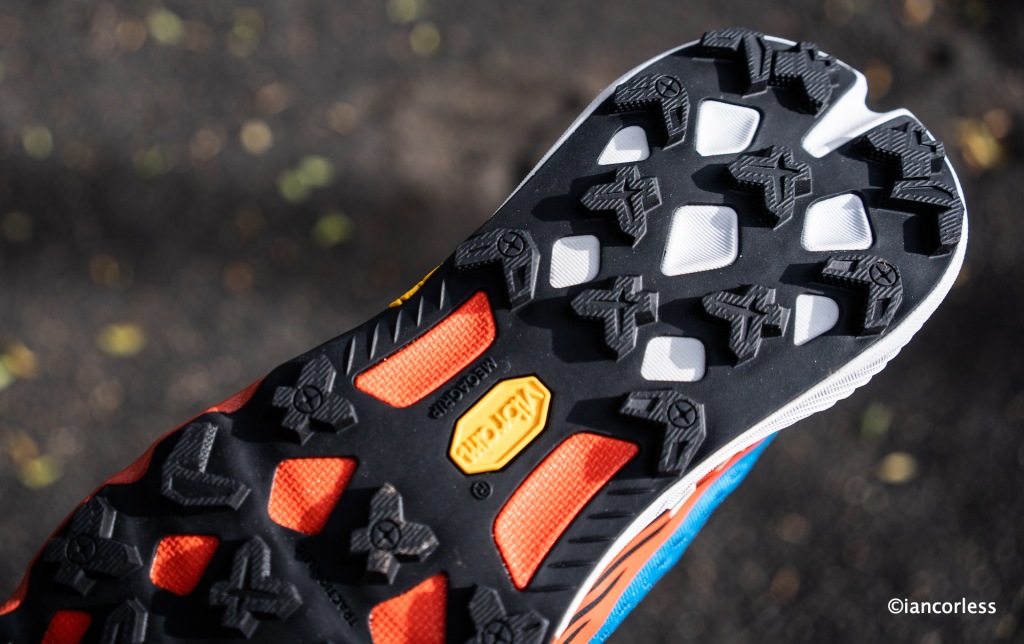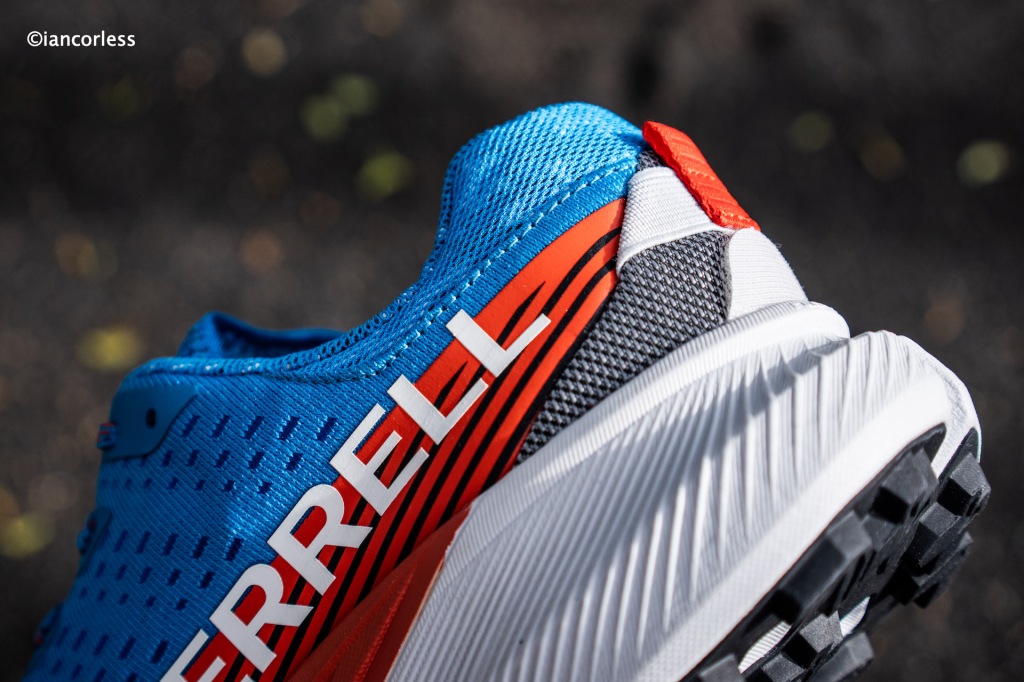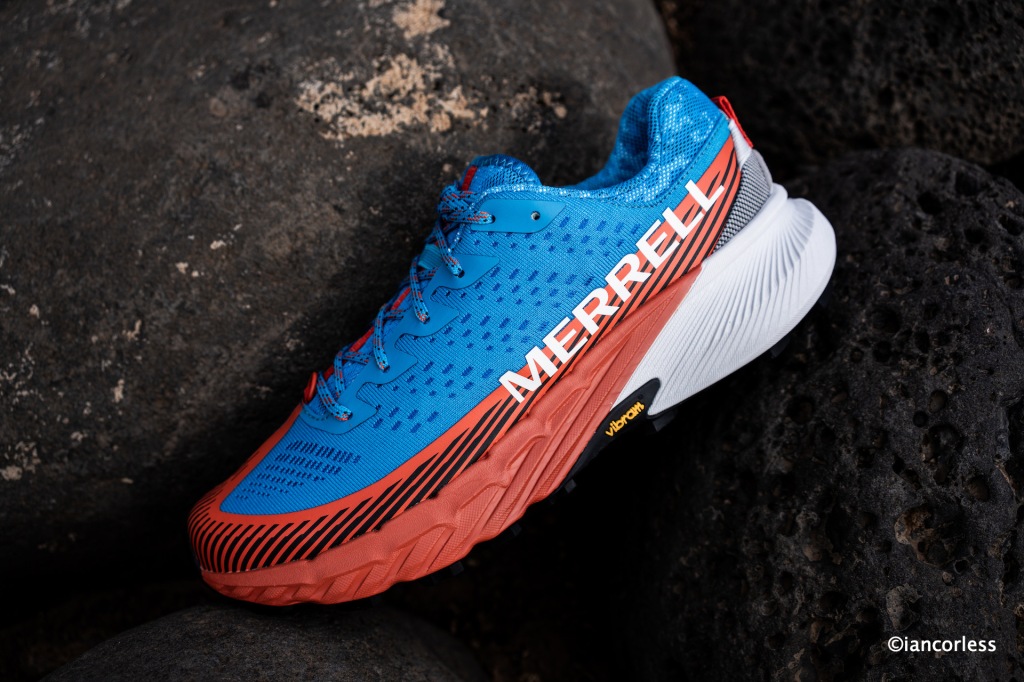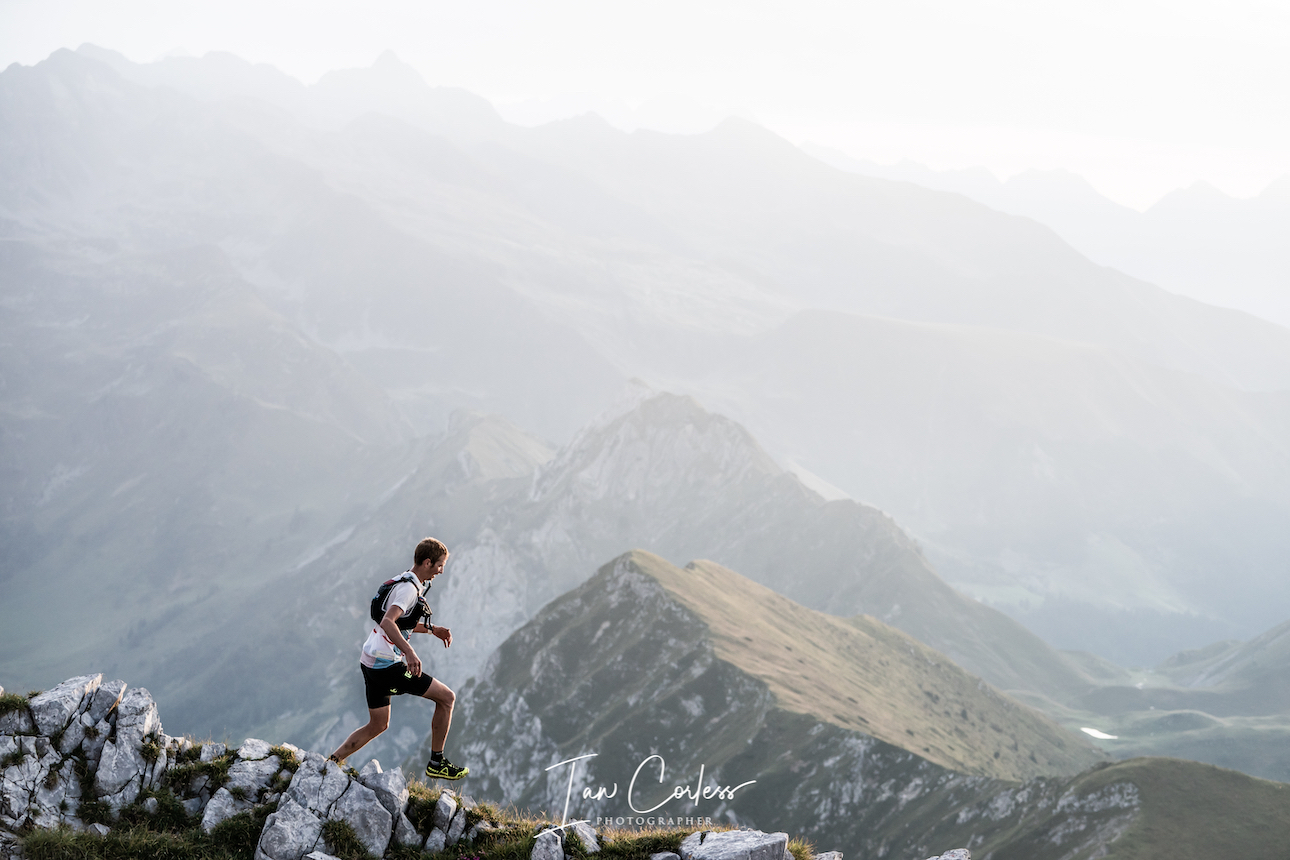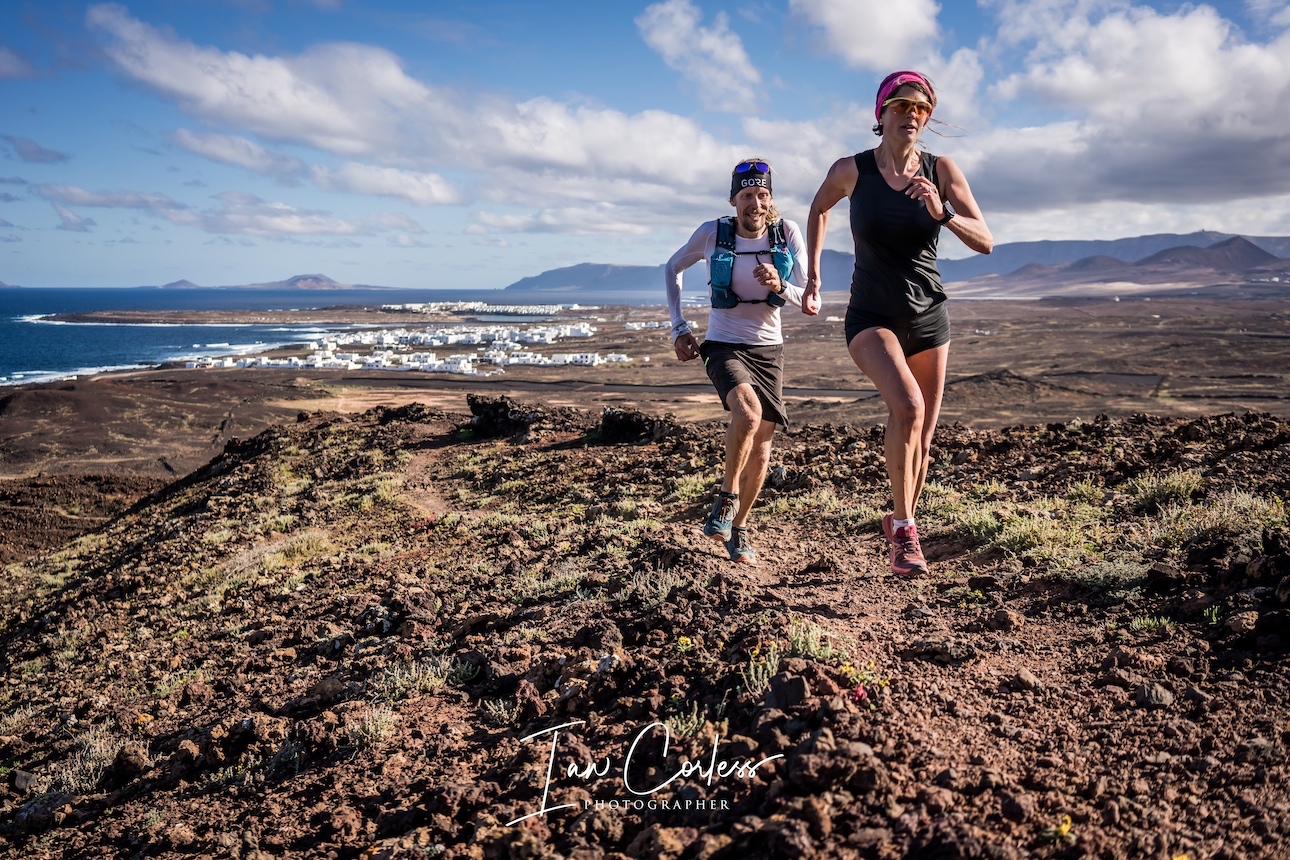
Raidlight as a brand have been synonymous with desert racing for over 20-years, it was the brands USP and even today, it is a the core of the business founded by Benoit Laval in 1999.
It was around 2006/ 2007 when the ‘Olmo’ pack was created for Italian legend, Marco Olmo. A ground-breaking ultralight pack designed to carry many items with bottle holders on the front. From here, the rest is history with a range of packs and apparel that are specifically designed for stage and multi-day racing in hot environments such as the Sahara. A range of specific products can be seen HERE.

Ultralight packs, front packs, desert hats, gaiters, sun protect long-sleeve tops, tyvek top and pants and now a DESERT SPECIFIC SHOE.

In 2019, Raidlight created their first shoes. A bold move in a market that is saturated with choice, especially when one considers the R&D and manufacturing costs.
The recent Ultra 4 shoe with 6mm drop, 4mm outsole and increased cushioning has now been developed to provide the ultimate, one-stop shoe for desert terrain. The ULTRA 4 DESERT PROTECT.

What is a specific desert shoe?
Running in a desert, sandy or harsh environment, even snow, brings a challenge for a shoe. Shoes are designed to be comfortable but also breathable. The downside of breathable is that while it allows hot air to escape the shoe, this also allows sand and debris to enter the shoe. This is not a good idea in a desert environment. For many years, the best option has been to have velcro sewn and glued to your preferred shoe and then add a gaiter /such as THIS) to not allow sand to enter the shoe – it works.
There is a cost involved to this:
- Shoe 150.00
- Gaiter 25.00
- Sewing/ glueing velcro: 60.00
- Total cost 235.00+/-
For countless editions of desert races all over the world, this system is tried and tested. It really does work. The only downside, one needs to be careful that the addition of velcro to a shoe does not alter alter its shape and feel, so, once you have velcro added ALWAYS test and make sure the fit is the same.
ULTRA 4 DESERT PROTECT

Many brands have played with the idea of producing a specific desert shoe and notably in the last 5-years I have seen brands such as Salomon, Hoka, Merrell and La Sportiva specifically adapt existing shoes to make prototypes for elite athletes. We have seen this work specifically for Julien Chorier (Hoka), Mathieu Blanchard (Salomon) and Ragna Debats (Merrell).
Why have the brands above not released a shoe to market?
I guess the simple answer is, a desert running shoe is a very specific market and in real terms, it’s a small market. So, financially (maybe) the figures just don’t add up?

Raidlight on the other hand already produce gaiters, they also already offer a velcro stitching service (here), so, by adapting an already existing shoe with the addition of velcro and a specific gaiter makes sense.
Especially when this is all offered for 150.00 euro in the ULTRA 4 DESERT PROTECT.
I received my shoes in advance of Marathon des Sables, perfect timing. I wasn’t running the race but I was in Morocco before the race running everyday and in addition, I was working everyday during MDS in the same environment as the runners. Ideal.
THE SHOE

My first surprise was the weight of the shoe, they look heavy but they are not! For a standard UK8/EU42 they were 280g, for my UK9.5/ EU44 they were 295g with the velcro and 325g with the gaiter.

Not knowing how the shoe fit was my biggest concern, especially for a desert/ sand shoe. There is no need for ‘bigger’ shoes just because you are going to a desert (read a article HERE). Quite simply, if a shoe is too big your foot moves inside the shoe, a moving foot creates friction, friction equals blisters. A thumb nail of space above your longest toe is ideal, and when I say longest, this may not be the big toe! One consideration is width, make sure you have enough room for toe splay. Feet may go wider in the desert, so, be considerate of this.
The ULTRA 4 DESERT PROTECT were true to size and I therefore went with my standard UK9.5/ EU44 based on advice from Raidlight and they were perfect.

The colour way of red/blue/black really works, I like them. The red/black gaiter is also a nice touch.

If you have velcro sewn/glued on a normal shoe, the velcro will go completely around the perimeter of the shoe, this ensures sand/ debris can enter at no point. The downside of this is that the velcro can get damaged at the front when hitting rocks or on challenging terrain.

Raidlight have got around this by bringing the velcro up the shoe to just below the laces. This I love.
To combat sand entering the shoe where there is no gaiter, Raidlight use MATRYX material. In a way, this is similar to Gore-Tex, keeping debris out while allowing the foot to breathe. It works, I had no sand enter my shoe on any occasion.
The gaiter attaches as standard and comes higher up the leg with velcro fastening and the option to adjust how tight at the top of the leg. I actually never opened mine. I fastened them together the first time and then removed and added them like socks when in use. This worked for me and ensures the velcro has a longer life. You just simply need to remember to put the gaiter on first, then socks, then shoes and then fit the gaiter.
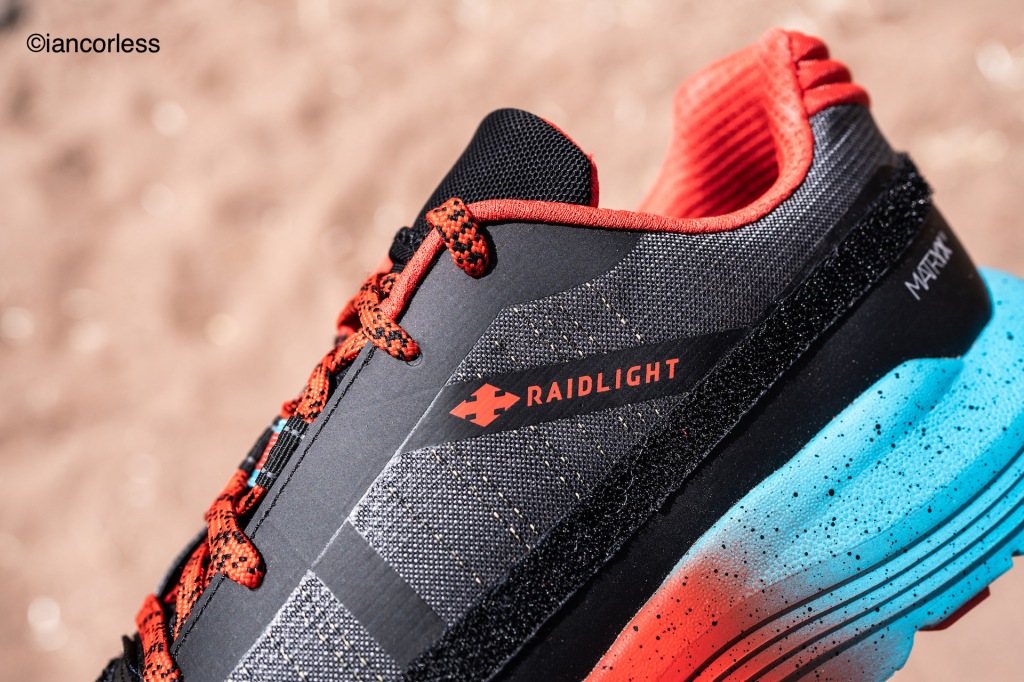
The lacing works really well providing plenty options for great foot hold and the storage pocket at the top of the tongue is great for keeping laces out of the way. Once tied I had no reason to adjust them when in use and they never came undone, partly due the laces being flat and not round.
A neutral shoe, sliding them on, there was an instant comfort feel. These are not bouncy shoes but they are cushioned and comfortable with notable excellent grip at the heel. When running, there is good propulsion from behind the metatarsals and notably there is excellent protection from rocks and debris. The addition of elastic (M-lock band) on the tongue allows for flexibility and support.

The toe bumper is solid and offers great protection from rocks and debris.

The outsole with 4mm lugs offers a great middle ground and works exceptionally well. I have not tried them on wet ground or rocks.
With 19mm cushioning at the front and 25mm at the rear, the 6mm drop sits, once again in the middle ground and is ideal for long distance running.
IN USE

Have to say, I was surprised. My first sand run felt very comfortable and the shoe performed perfectly. They provided excellent comfort, great protection, plenty of toe splay and the gaiter with the Matryx upper allowed no sand to enter.
The downside? They were warm! To be fair though, comparing to my other shoes (Hoka) with sewn velcro and the addition of a Raidlight gaiter, the differences were comparable.

The more runs I had in them, the better the feel cam and I would recommend looking to put 30-50km’s in them before using them for your chosen race or adventure. I do caveat that by saying they were great out of the box, but certainly several runs did allow them to just fit and conform to my foot.

I have no negative comments. With 150km’s now in the shoe and a complete battering in the Sahara, the shoes offered all day comfort without a trace of sand entering the shoe.
I will also add, this is a new shoe. They only came available just before the 2024 MDS. Despite this, I saw many pairs out ion the Sahara. I spoke to everyone I could and the feedback was the same, perfect shoe, great comfort and no sand inside.
CONCLUSION

Shoes are personal and the most important thing in any adventure or race is a shoe works for you and causes no problems or issues. This is especially important in a race like MDS when so many other factors and variables come in to play. The ULTRA 4 DESERT PROTECT offers a one-stop solution to a problem and if this shoe works for you, it comes highly recommended. It will certainly be a highly recommended shoe of choice for this environment in the future.

“Unrivalled comfort, cushioning and dynamism. Designed and engineered to go the distance, making them the shoe for ultra trail runners. The midsole incorporates dual density technology, offering a perfect balance between cushioning and responsiveness. The lightweight design reduces fatigue while providing protection and support. Comfort over longer distances, while maintaining optimum stability over a wide range of terrain.”

Follow on:
Instagram – @iancorlessphotography
Twitter – @talkultra
facebook.com/iancorlessphotography
Web – www.iancorless.com
Web – www.iancorlessphotography.com
Image sales –www.iancorless.photoshelter.com






